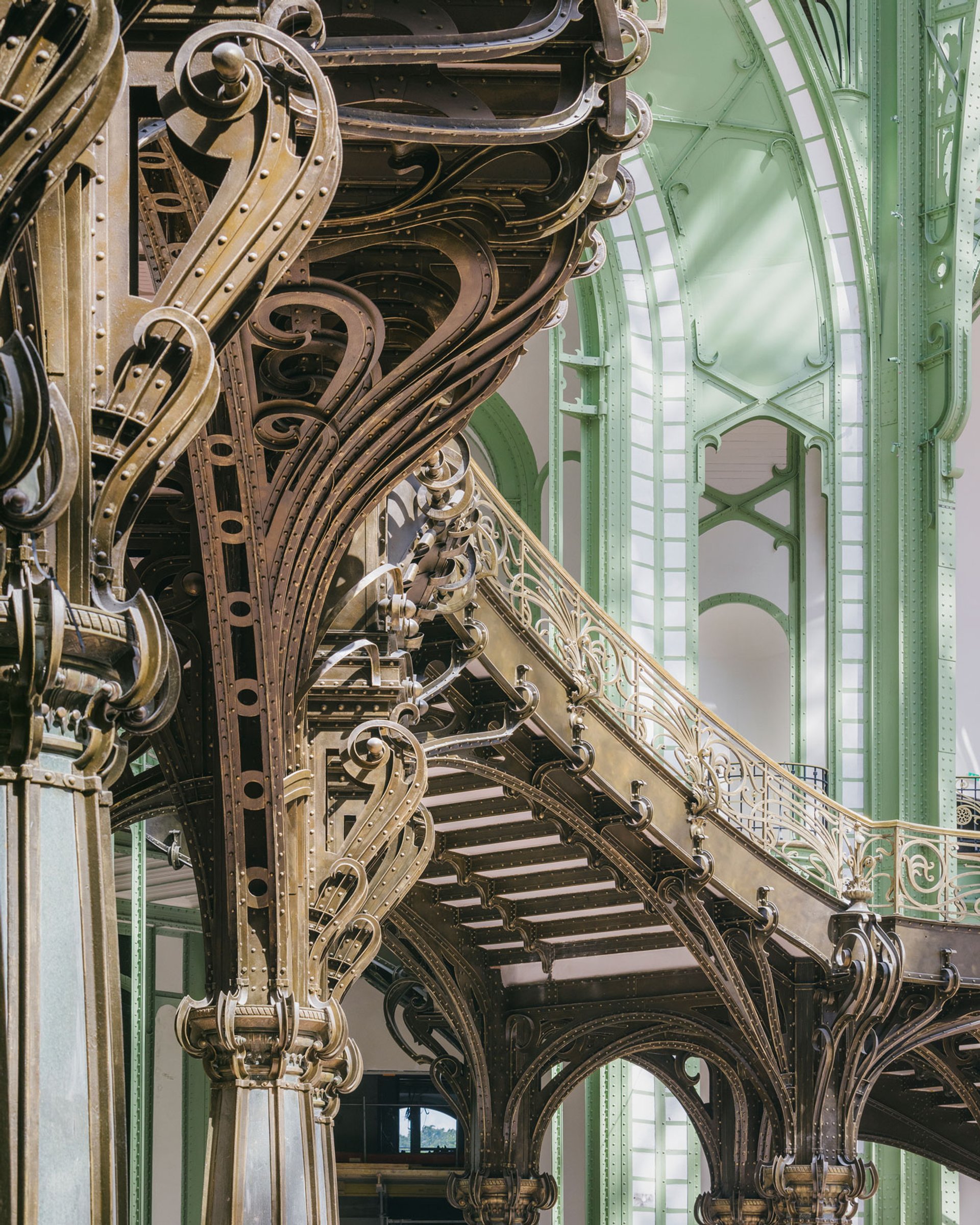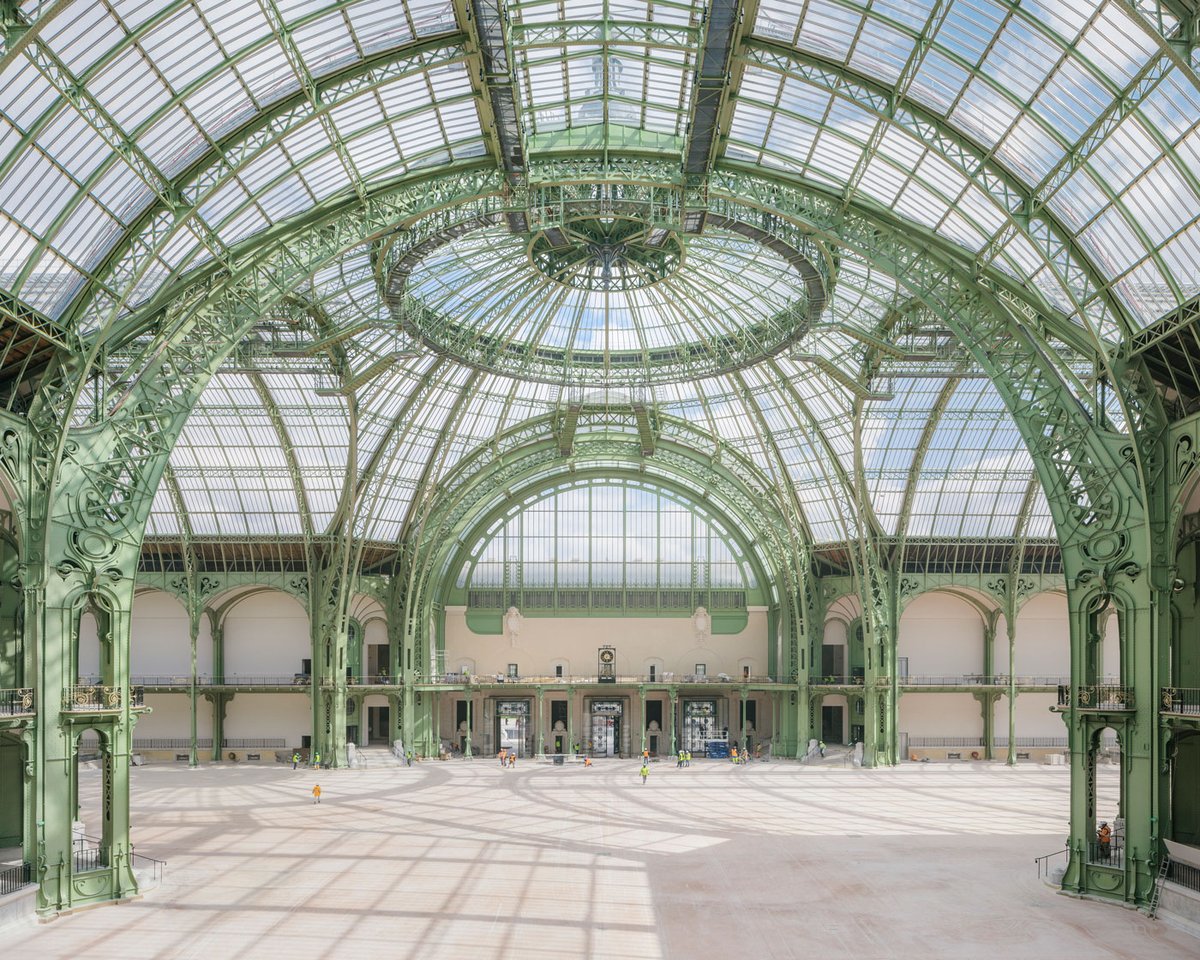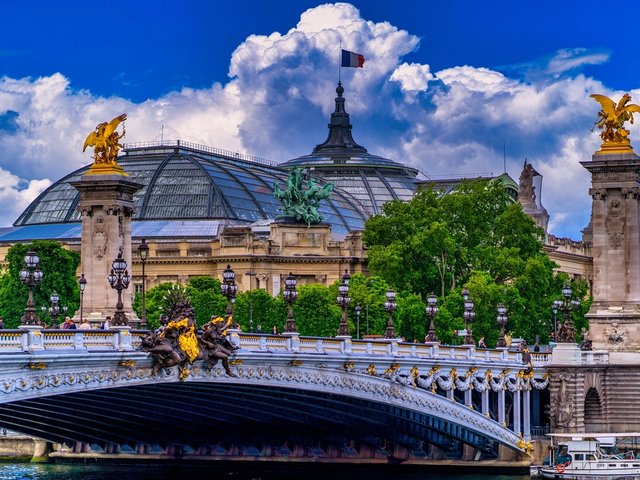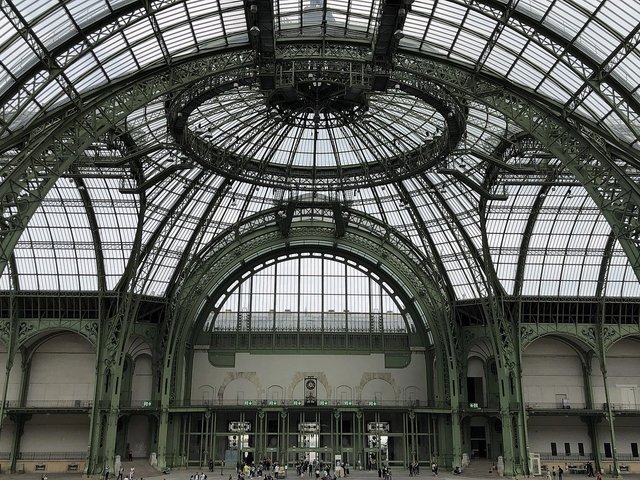In 1900 the Grand Palais des Champs-Elysées opened its doors as the spectacular new venue for the Universal Exhibition. Along with the Petit Palais, the Pont Alexandre III and line 1 of the Paris metro, it marked the beginning of the century as a monument to French artistry and craftsmanship, as well as the very latest innovations of a light iron and steel framework and reinforced concrete. Now, after a three-year closure and a spectacular €466m renovation by Chatillon Architectes, it will open again on 26 July until 11 August as the venue for fencing and taekwondo during the Paris 2024 Olympics.
“We are not just restoring the building,” said François Chatillon, the founder of Chatillon Architectes, as he gave an exclusive tour of the building in late March. Nearly 1,000 workers still laboured on the interior, including cleaning its 17,500 sq. m domed roof over the central nave (at 13,500 sq. m, the largest of its kind in Europe). “It will function at ten times its previous capacity.”

At 13,500 sq. m, the Grand Palais's main nave is the largest of its kind in Europe Laurent Kronental
“You could install the whole of Versailles inside it now,” said Didier Fusillier, the president of Réunion des Musées Nationaux-Grand Palais, the government body that operates the building. “But it’s in the heart of Paris. It will impact the very centre of the city," added Fusillier, who succeeded Chris Dercon in the role in 2023.
Access all areas (again)
Chatillon has respected the original designs of the Grand Palais’s three architects—Henri Deglane, Albert Louvet and Albert Thomas—and has removed the wall constructed in 1937 (when part of the building was given over to the Palais de la Decouverte), allowing visitors to once again pass from east to west, from the new entrance on Place Jean Perrin to the Seine.
Chatillon has lavished attention on the myriad Art Nouveau details along with Louvet’s sweeping staircase, designed in the movement’s mid-period. The original stone floors, however, have been replaced with a new pinkish thermo-concrete. “There was a big debate when I proposed this to the minister of culture—a three-and-a-half year discussion,” the architect revealed. “But this choice came from extensive research into what effect the original floor would have had. What we have now is a coral colour—neither pink nor yellow.”

The Grand Palais is a monument to French artistry and craftsmanship in the late 19th century Laurent Kronental
Chaotic history
The Grand Palais has a rich and chaotic history. Built on a riverside site, it suffered from chronic subsidence until it was correctly underpinned in the late 2010s. It served as a military hospital in the First World War, and a Nazi bolthole in the Second World War. Chatillon is critical of the entrance foyer being named after the designer Gabrielle "Coco" Chanel—who collaborated with the Nazis in occupied Paris—remarking that her fashion house had donated “just” €25m to the project.
More recently the Grand Palais has hosted some exceptional art exhibitions, among them Anish Kapoor’s Leviathan in 2013—a vast PVC, blood-red structure that took over almost the entirety of the nave.
After the Olympics, the building will close again for part two of the restoration work. In October 2024, a section will be reopened to host Paris+ par Art Basel, the fair that launched in 2022 in the temporary Grand Palais Éphémère in the Champs de Mars. “The Grand Palais was built to accommodate large-scale exhibitions,” says Clément Delépine, the director of Paris+. “It will allow us to include 20% to 30% more galleries.”
According to Fusillier, the Grand Palais’s grand opening celebrations will include tight-rope walkers braving the length of the 200m nave. The Centre Pompidou is also set to occupy a part of the building as its own closes for a major overhaul: a show featuring the work of Jean Tinguely and Niki de Saint Phalle—who were married from 1971 until Tinguely's death in 1991—will open on 5 June 2025.




